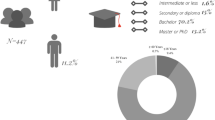Abstract
In a broad market survey, 145 samples of tattoo- and permanent make-up pigments were bacteriologically analysed. The pigments originated from 39 unopened vials and 106 opened vials in use. The samples were collected from 33 tattoo shops and 22 beauty studios and the analyses were effected by direct plating on four agar media and by enrichment in a non-selective broth. None of the used media could detect all contaminated samples. The best performance was obtained with sheep blood agar (BA), which detected bacterial counts in 7 of 39 (17.9 %) of unopened vials and in 22 of 106 (20.8 %) opened vials. In 12 of 145 samples (8.3 %), bacterial growth was observed in the enrichment broth but not on sheep BA. In most cases, contaminations were in a low range of 101–102 cfu / mL. Counts in the range of 103–108 cfu / mL were registered in only four samples that were from different tattoo shops and from different manufacturers. Among the 31 bacterial species that were detected in the examined pigments, 20 (64.5 %) belonged to Gram positive rods or to Bacillus or related genera, respectively, 8 (25.8 %) to Gram positive cocci and only 3 (9.7 %) to Gram negative rods. Bacterial agents, known to cause dermal infections, were never detected. Based on the obtained data, a simple risk assessment was made, and microbiological criteria for future legal regulation proposed.
Zusammenfassung
In einer breit angelegten Marktüberwachung wurden insgesamt 145 Proben von Tätowier- und Permanent-Make-Up Farben bakteriologisch analysiert. Die Farben aus 39 ungeöffneten und 106 geöffneten Behältnissen stammten aus 33 Tätowierstudios und 22 Kosmetiksalons. Die Analysen erfolgten durch direktes Ausplattieren auf vier Agarmedien und durch Anreicherung in einem Flüssigmedium. Keines der eingesetzten Medien konnte alle kontaminierten Proben erfassen. Die höchste Positivrate wurde mit Schafblutagar erzielt, der in 7 von 39 (17.9 %) ungeöffneter und in 22 von 106 (20.8 %) geöffneter Farben Keime nachwies. In 12 von insgesamt 145 Proben (8.3 %) zeigte sich in der Anreicherung ein Wachstum, nicht aber auf Schafblutagar. In den allermeisten Fällen lagen die Kontaminationen im quantitativ tiefen Bereich von 101–102 KBE pro mL. Nur bei vier Proben aus unterschiedlichen Studios und von verschiedenen Herstellern wurden Keimzahlen im Bereich von 103–108 KBE pro mL registriert. Unter den aus Farben isolierten 31 Keimarten gehörten 20 (64.5 %) zu den Gram positiven Stäbchen beziehungsweise zu Bacillus oder verwandten Genera, 8 (25.8 %) zu den Gram positiven Kokken und nur 3 (9.7 %) zu den Gram negativen Stäbchen. Bekannte Erreger von Hautinfektionen wurden nie nachgewiesen. Abgestützt auf die erhaltenen Daten wurde eine qualitative Risikoabschätzung vorgenommen und mikrobiologische Kriterien für künftige gesetzliche Regelungen postuliert.
Similar content being viewed by others
References
Anonymous (2006) Methicillin-resistant Staphylococcus aureus skin infections among tattoo recipients—Ohio, Kentucky, and Vermont, 2004–2005. MMWR 55:677–679
Baumgartner A, Bischofsberger T, Bissig-Choisat B, Dalla Torre M, Emch H, Gafner JL, Hübner P, Müller C, Scheffeldt P, Spahr U, Stephan R, Wäspi U (2006) Leitfaden zur Validierung mikrobiologischer Prüfverfahren und zur Abschätzung der Messunsicherheit im Bereich Lebensmittel- und Umweltmikrobiologie. Mitt Lebensm Hyg 97:73–106
Bundesamt für Gesundheit (BAG) (2009) Konformität von Tätowier- und Permanent-Make-up-Farben nicht zufriedenstellend. BAG Bull 29:535–541
Drage LA, Ecker PM, Orenstein R, Phillips K, Edson RS (2010) An outbreak of Mycobacterium chelonae infections in tattoos. J Am Acad Dermatol 62:501–506
Eidgenössisches Departement des Innern (EDI) (2009) Verordnung des EDI über Gegenstände für den Schleimhaut-, Haut- und Haarkontakt sowie über Kerzen, Streichhölzer, Feuerzeuge und Scherzartikel vom 23. November 2005, Stand am 25. Mai 2009 (SR 817.023.41). BBL, 3003 Bern
Engel E, Santarelli F, Vasold R, Maisch T, Ulrich H, Prantl L, König B, Landthaler M, Bäumler W (2008) Modern tattoos cause high concentrations of hazardous pigments in skin. Contact Dermat 58:228–233
Giulieri S, Cavassini M, Edney T, Musumici E, Voide C, Odman M, Morisod B, Hamman C, Malinverni R, Genne D, Masserey E, Jaton K (2010) M. haemophilum lymphadenitis outbreak among 12 Swiss women after permanent make-up. In: Swiss Society for Microbiology, proceedings of the 69th annual assembly, Zürich, Switzerland, 24–25 June 2010, 278 pp
Handrick W, Nenoff P, Müller H, Knöfler W (2003) Infektionen durch Piercing und Tatoos - eine Übersicht. Wien Med Wochenschr 153:194–197
Vasold R, Engel E, König B, Landthaler M, Bäumler W (2008) Gesundheitsrisiko durch Tätowierpigmente. Haut 02/08:104–106
Author information
Authors and Affiliations
Corresponding author
Rights and permissions
About this article
Cite this article
Baumgartner, A., Gautsch, S. Hygienic-microbiological quality of tattoo- and permanent make-up colours. J. Verbr. Lebensm. 6, 319–325 (2011). https://doi.org/10.1007/s00003-010-0636-5
Received:
Accepted:
Published:
Issue Date:
DOI: https://doi.org/10.1007/s00003-010-0636-5




